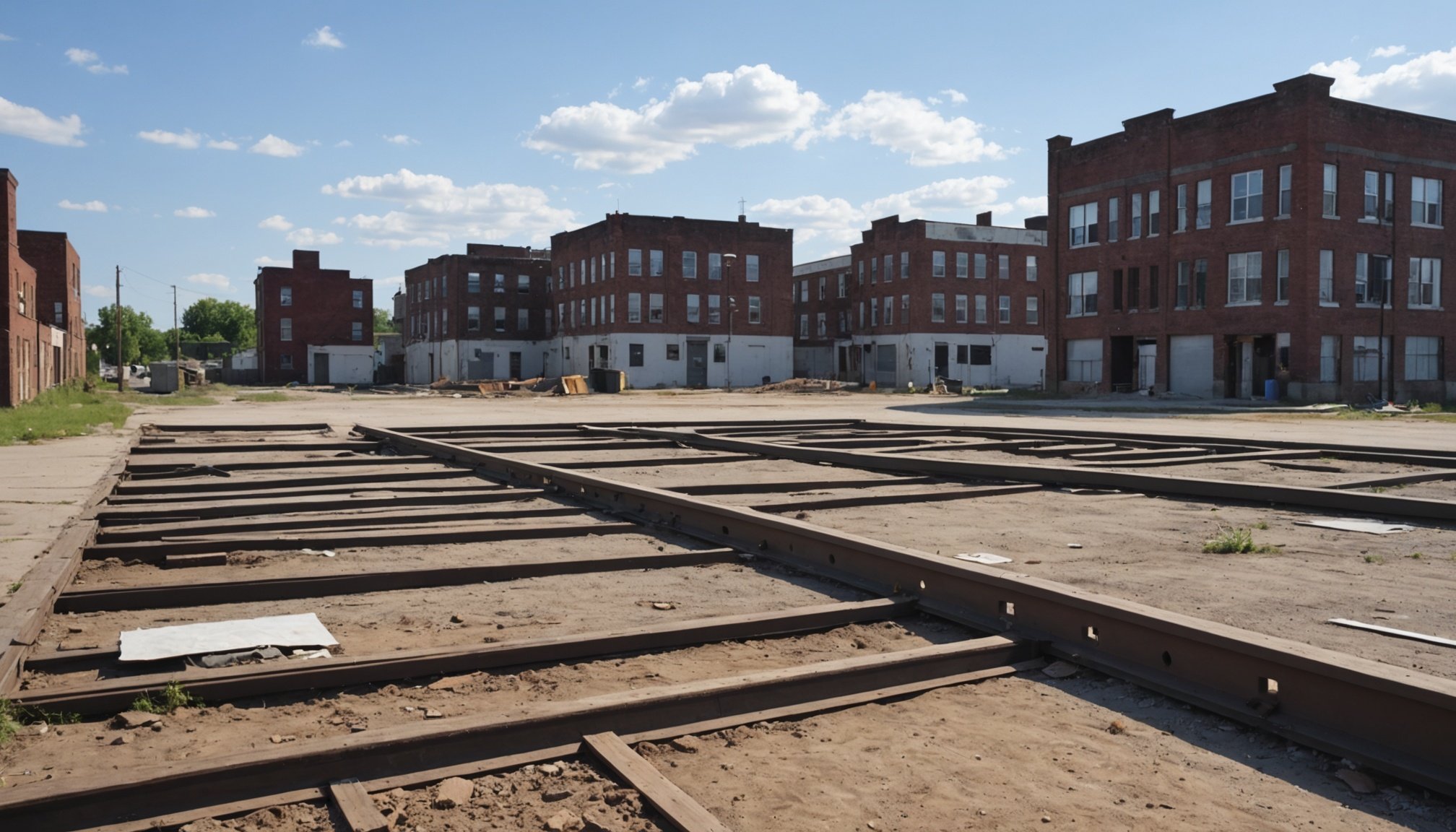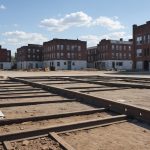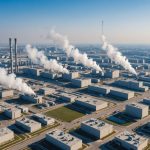Conquering Hurdles: Key Challenges in Revitalizing Brownfield Properties for Development
Revitalizing brownfield properties is a complex and multifaceted process that offers significant benefits for both the environment and the economy. However, it is not without its challenges. In this article, we will delve into the key hurdles faced by developers, communities, and regulatory bodies when redeveloping these sites, and explore how these challenges can be overcome.
Understanding Brownfield Sites
Before diving into the challenges, it’s essential to understand what brownfield sites are. Brownfields are properties that are contaminated or perceived to be contaminated with hazardous substances, pollutants, or contaminants, making them difficult to redevelop. These sites often have a history of industrial, commercial, or agricultural use, which has left a lasting environmental impact.
Also to see : Effortless Integration: A Renter’s Roadmap to Smart Home Tech Success
Environmental Cleanup Process
One of the most significant challenges in redeveloping brownfield sites is the environmental cleanup process. This process involves several critical steps:
Site Assessment
The first step is a comprehensive evaluation of the extent and nature of the contamination. This includes identifying the types and levels of contaminants present, such as lead, dieldrin, toxaphene, and arsenic, as seen in the case of the $9 million brownfield redevelopment project in Martin County, Florida[2].
Have you seen this : Discover the Latest Innovations in Workspace Design Transforming Hybrid Work Environments
Remediation Planning
Once the contaminants are identified, strategies must be developed to address each one effectively. This can involve various techniques such as soil washing, thermal desorption, bioremediation, and phytoremediation.
Soil and Groundwater Remediation
The actual cleanup involves removing or treating contaminated soil and restoring groundwater quality. For example, lead might require excavation and off-site disposal or on-site stabilization, while dieldrin may involve soil washing or bioremediation[2].
Monitoring
Ongoing monitoring is crucial to ensure the effectiveness of the cleanup efforts and to address any residual contamination.
Regulatory Oversight and Compliance
Regulatory oversight is another significant challenge. Here are some key aspects:
County and State Approval
Projects must gain approval from local county commissions and state environmental protection agencies. For instance, the Martin County Commission must officially designate the property as a brownfield site before any redevelopment can begin[2].
Public Hearings and Community Involvement
Public hearings are often required to ensure community input and transparency. This helps in addressing potential concerns about residual contamination or increased industrial activity.
Adherence to Federal and State Guidelines
Developers must comply with federal standards set by the Environmental Protection Agency (EPA) and state regulations, such as those enforced by the Florida Department of Environmental Protection (FDEP)[2].
Financial Viability
Financial challenges are a major hurdle in brownfield redevelopment. Here are some key considerations:
Funding and Incentives
The cost of environmental cleanup can be prohibitive. However, programs like the brownfields program offer tax incentives, voluntary remediation encouragement, and cost alleviation to offset these expenses. For example, property owners in Florida can receive up to $500,000 annually in corporate income tax credits during the cleanup process[2].
Balancing Costs and Returns
Developers must balance the costs of cleanup with the potential economic returns of site redevelopment. This often involves securing funding through grants, loans, or public-private partnerships.
Community Concerns and Engagement
Community concerns are a critical aspect of brownfield redevelopment:
Addressing Health and Environmental Worries
Communities may worry about the health impacts of residual contamination or the increased industrial activity that comes with redevelopment. Developers must engage with the community to address these concerns transparently.
Public Participation
Public participation is essential for ensuring that the redevelopment aligns with community needs and values. This can involve community meetings, surveys, and other forms of engagement.
Technological Innovations
Advanced technologies can significantly enhance the efficiency and effectiveness of brownfield redevelopment:
Satellite Imaging and GIS Mapping
Technologies like satellite imaging and GIS mapping can be used for initial site assessments and ongoing monitoring. These tools help in creating detailed site plans and tracking remediation progress[2].
AI and Machine Learning
AI and machine learning can be applied for predictive modeling of contaminant behavior and remediation outcomes, making the cleanup process more targeted and efficient.
Case Study: Martin County, Florida
The $9 million brownfield redevelopment project in Martin County, Florida, serves as a compelling case study:
| Project Location | Site Size (acres) | Total Investment ($M) | Primary Contaminants | Proposed Redevelopment Use | Estimated Job Creation | Environmental Benefits | Economic Impact ($M) |
|---|---|---|---|---|---|---|---|
| Martin County, FL | 8 | 9 | Lead, Dieldrin, Toxaphene, Arsenic | Marine Construction Hub | 30 | Soil & Groundwater Remediation | Est. 15-20 |
This project aims to rehabilitate an 8-acre contaminated site along the St. Lucie Canal, transforming it into a thriving marine construction hub. The project highlights the challenges and benefits of revitalizing industrial sites, including significant job creation and economic stimulation through redevelopment[2].
Broader Impact on Sustainable Development
Brownfield redevelopment projects have a broader impact on sustainable development:
Promoting Sustainable Urban Development
These projects help in reducing urban sprawl by reusing existing land rather than developing new areas. This approach promotes more sustainable urban development and reduces pressure on undeveloped land.
Improving Public Health
By eliminating sources of pollution, brownfield redevelopment improves public health and environmental quality. For example, the removal of contaminants like lead and arsenic from the Martin County site will significantly reduce health risks for the local community[2].
Stimulating Local Economies
Brownfield redevelopment can stimulate local economies through job creation and increased property values. The Martin County project is expected to create 30 jobs and have an economic impact of $15-20 million[2].
Practical Insights and Actionable Advice
For those involved in brownfield redevelopment, here are some practical insights and actionable advice:
- Engage with the Community Early: Early engagement with the community can help address concerns and ensure that the redevelopment aligns with community needs.
- Leverage Financial Incentives: Utilize tax incentives, grants, and other financial support mechanisms to offset the costs of environmental cleanup.
- Adopt Advanced Technologies: Use technologies like satellite imaging, GIS mapping, and AI to enhance the efficiency and effectiveness of the redevelopment process.
- Ensure Regulatory Compliance: Work closely with regulatory agencies to ensure compliance with federal, state, and local environmental regulations.
- Develop a Comprehensive Remediation Plan: Create a detailed plan that addresses each contaminant effectively and includes ongoing monitoring to ensure the success of the cleanup efforts.: A Path Forward for Sustainable Development
Revitalizing brownfield properties is a complex but rewarding process that offers numerous benefits for the environment, the economy, and local communities. By understanding the challenges involved and leveraging the right strategies, technologies, and financial incentives, developers can turn these environmental liabilities into economic assets.
As Brett Brumund, the attorney representing the property owner in the Martin County project, emphasizes, “This program not only facilitates economic development and job creation but also ensures the environmental restoration of contaminated sites.”[2]
In conclusion, brownfield redevelopment is a critical component of sustainable development, promoting urban renewal, improving public health, and stimulating local economies. By conquering the hurdles associated with these projects, we can create a more sustainable and prosperous future for communities nationwide.








